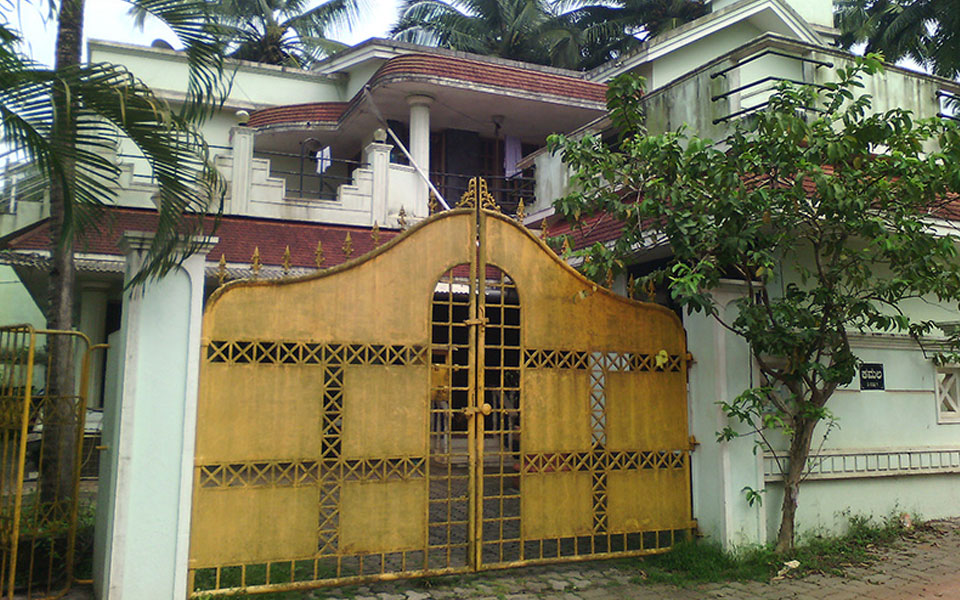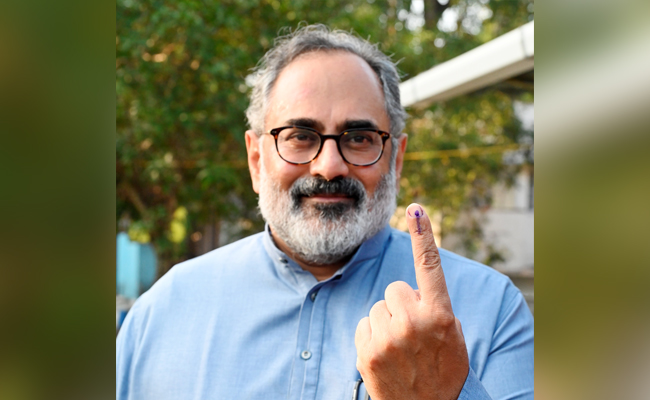Puttur, October 21: Union Minister D.V. Sadananda Gowda who entered into political field from Puttur constituency and enjoyed various powers as MLA, MP, Chief Minister and Union Minister, has sold his house situated at Padil, on the outskirts of the town.
Sources said that D.V. has sold his house which ensured him all positions and powers. Though Sadananda Gowda served as the MLA, Udupi-Chikmagalur Lok Sabha Member, BJP State President, Chief Minister and currently as the Union Minister, he remained as the voter of Puttur. Now, the news of selling his house in Puttur created a debate among the people who have been speaking that Sadananda Gowda has forgotten his constituency and people.
D.V. has his house at Haradi on Puttur-Uppinangady road in Padil ward in the town. He named his house after his mother Kamala. Since the symbol of his party BJP was also ‘Kamala’, he used to remember his mother and the party with the name of his house. He had constructed the house when he became the MLA for the second time. Now, sources said that Sadananda has sold the house constructed on 13 cents land to a Muslim person for Rs 1.25 crore. Currently, he is constructing a house in Bengaluru, sources said.
Hailed from Devaragunda in Mandekolu village in Sullia taluk, Sadananda Gowda was working as an advocate in Sullia. At this time, BJP leaders announced him as the candidate from Puttur constituency. He was defeated in his first attempt from Puttur constituency. But in his second, he had won from Puttur. He became the Puttur MLA for two terms. When he was Mangaluru MP, he became the BJP State President and later, served as the Chief Minister of the state. In the last Lok Sabha elections, he was elected from Bengaluru South Constituency and is serving as the Union Minister in the Narendra Modi government.
Though he had entered his political career from Puttur constituency, he was keeping himself away from Puttur people for the last few years. In every elections, he used to come along with his wife Dati Sadananda Gowda and son Karthik to Haradi polling station and cast his votes. But in the least election held for Puttur city municipal council, he came alone and exercised his vote. Since he has sold his house in Puttur, people have been talking that he would keep himself away from Puttur constituency and people.
Let the Truth be known. If you read VB and like VB, please be a VB Supporter and Help us deliver the Truth to one and all.
Mumbai (PTI): A total of 350 cricketers, including 240 Indians, will go under the hammer in the IPL auction to take place in Abu Dhabi on December 16, with South Africa's comeback man Quinton de Kock a surprise late addition to the final list.
Wicketkeeper-batter De Kock, who recently came out of his ODI retirement, has been kept at a base price of Rs 1 crore. The list also includes Australia batter Steve Smith at a base price of Rs 2 crore. Smith last played in the IPL in 2021.
A total of 1,390 players registered for the Player Auction. The number was pruned to 1,005 players before 350 were finally shortlisted to battle for 77 slots available including 31 for overseas players, across the 10 teams for the 19th edition of the world’s biggest T20 league.
The first set of players in the auction includes India and Mumbai batters Prithvi Shaw and Sarfaraz Khan, who both have kept their base price at Rs 75 lakh each. Shaw had a regular run in the IPL from 2018 to 2024 but had gone unsold in the auction for the last edition, whereas Sarfaraz has not played in the competition since 2021.
The list shared by the IPL features two Australians in Cameron Green and Jake Fraser-McGurk, along with New Zealand and former Chennai Super Kings opener Devon Conway and South Africa’s David Miller, with each of them keeping a base price of Rs 2 crore.
Venkatesh Iyer, who was released by Kolkata Knight Riders, has listed himself at a base price of Rs 2 crore. Among domestic players, Kunal Chandela and Ashok Kumar, who are among the leading run-getters and wicket-takers respectively in the Syed Mushtaq Ali T20 Trophy, are also in the final list.
Three-time winners KKR will go into the auction with the biggest purse of Rs 64.3 crores, followed by five-time champions CSK with Rs 43.4 crores. Sunrisers Hyderabad, who have won the IPL once, have the third highest purse of Rs 25.5 crores.
As many as 21 England players feature in the list, including wicketkeeper-batter Jamie Smith, pacer Gus Atkinson, Liam Livingstone and Test opener Ben Duckett.
Green, expected to garner a lot of attention in this auction, leads the list of 19 Australians, with Josh Inglis, Matthew Short, Cooper Connolly and Beau Webster being the other prominent names.
De Kock and Miller are among the 15 Proteas players in the IPL auction, along with fast bowlers Anrich Nortje, Lungi Ngidi, Gerald Coetzee and all-rounder Wiaan Mulder.
Fast bowlers Alzarri Joseph and Shamar Joseph, Ackeem Auguste, Shai Hope and Roston Chase are among the nine players from the West Indies in the auction.
Sri Lankan spinners Wanindu Hasaranga, Dunith Wellalage, Maheesh Theekshana and Traveen Matthew will be among the dozen players from the island nation in the auction, along with Pathum Nissanka, Kusal Mendis and Kusal Perera.
Conway and Rachin Ravindra, who were released by CSK, are among the 16 New Zealand players in the auction.
Rahmanullah Gurbaz and Naveen ul Haq feature in the list of 10 players from Afghanistan.





